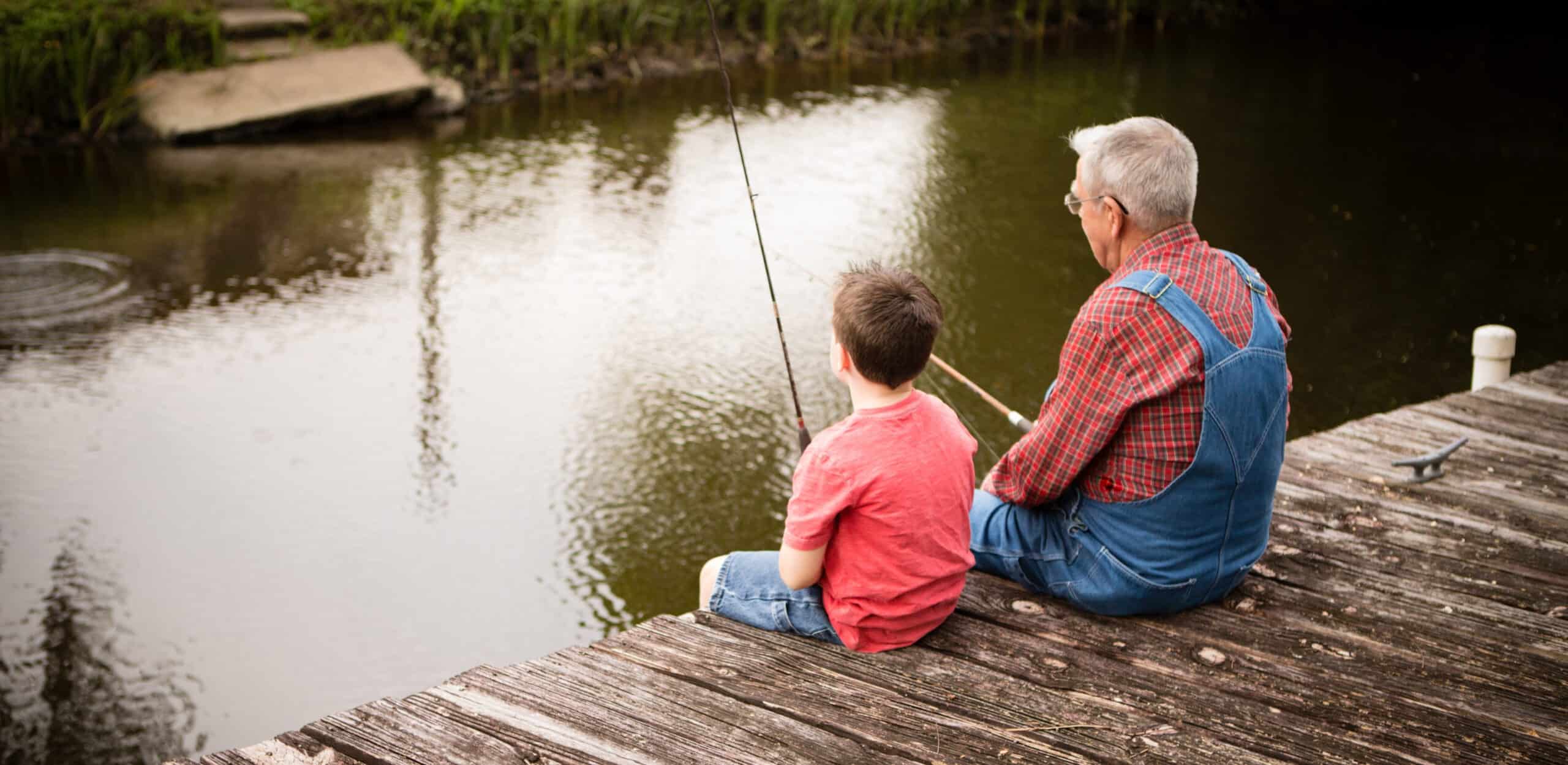
Everyone wins: What we gain from sharing family stories
By Teresa Trumbly Lamsam, Ph.D.
As great-grandfathers go, Tom Tinker was a giant among men – both in terms of character and size. Grandpa Tom was a WWI veteran and could usually be found in his oversized recliner. His imposing frame filled every inch of that brown chair, reminding me of the Lincoln monument in Washington, D.C., if one could imagine in Abe’s place a large, tall Osage elder with a crop of powder white hair.
When he spoke, wisdom permeated the room. I breathed in those stories. Even in my teens, I would gather around that plush chair, which by that time was adorned with Grandma Maude’s crocheted doilies. During college years, I brought friends to sit at the size 13 feet of Grandpa as he took us back generations sharing family stories.
I looked at sharing family stories as a way of life — a notion I held to until decades later as a professor I discovered students no longer knew family stories.
Historically, when oral storytelling in communities and families was pushed aside by rising literacy rates and societal changes, we eventually lost generational bonds and a good number of benefits. A few decades ago, a handful of researchers began to question what we had lost in abandoning an oral tradition. The answer: We’ve lost a great deal.
At the turn of the century, researchers from numerous fields in the social sciences and medicine delved deeper into the benefits of oral storytelling. More than two decades later, the research remains nuanced, but the positive indications are clear. The benefits tied to oral family storytelling are not confined by age. From the very young to the very old, everyone has something to gain.

Mental health providers have found that more knowledge of family history increases children’s likelihood of overcoming psychological and educational challenges.
Sharing family stories improves wellbeing
Children, including emerging adults, use personal family stories as a way to not only learn about parents or grandparents but also as a means to better understand themselves. Natalie Merrill, Ph.D., an Emory University psychologist who investigates autobiographical memory, has linked sharing family stories to identity.
Her research concludes that by sharing family stories “young people are linked to the past in ways in which they can learn about the self in familial and cultural context, which can shape ongoing understanding of their identity.”
Identity, in turn, has been linked to psychological health and wellbeing. UK researcher Jo Warin, who has extensively studied interpersonal development of children, coined the term Identity Capital, a measure of a child’s capacity to tell a “story of self.”
According to Warin’s research, those who can tap into the stock of resources provided by a strong identity have a social and psychological advantage.
In families who persist in storytelling, individuals tend to demonstrate a strong sense of intergenerational self, meaning that an adolescent, for example, would have an identity not only based on personal experiences but also family history.
Psychologists may not know how it happens, but research has shown that children who develop a strong intergenerational self are more resilient than those without it.
Specifically, researchers in psychology, like Merrill, agree that sharing family stories helps form identity in healthy ways and contribute to an individual’s development throughout life.
Want another reason for sharing family stories? Mental health providers have found that more knowledge of family history increases children’s likelihood of overcoming psychological and educational challenges.
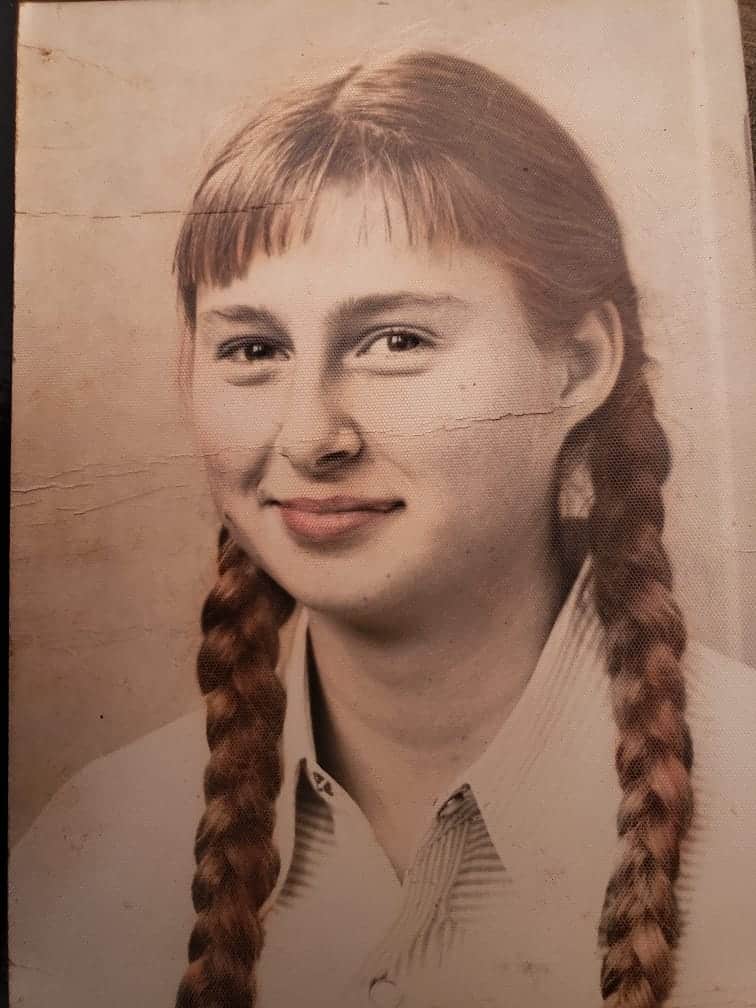
PeeWee’s famous braids
Ever since I was a young ‘un with my own braids, I’ve heard about PeeWee Johnson’s long braids. How she could whip them around like a defensive weapon. Whoa! to the naughty boys who wanted to tug on them.
Mom, who is still known as PeeWee Johnson to the ol’ timers around my hometown, was a champion of the underdog. She often employed her head snap to whip the braids around in protection of someone who was being picked on.
I never got that head whip down, not to mention my braids weren’t long enough to be “threatening,” but I did learn to stick up for those who needed help. I would love to hear how you are sharing family stories. Please send a message or leave a comment!
Sharing family stories builds strong families
In an overview of research, scholars at Brigham Young University found that when storytelling is nurtured and persistent in families or societies then people can actually connect to the “feelings and thoughts of individuals through generations” — even connections to those who have passed on.
Knowledge of family history indicates the presence of healthy processes in the family, according to research conducted in Emory University’s Family Narratives Lab. Researchers found that family history storytelling is most often found in highly cohesive families. Other studies have found higher levels of satisfaction in families who share stories.
In a speech about sharing family stories – How Family History Can Save the World – Amy Harris, Ph.D., also at Brigham Young University, calls us to a genealogical consciousness – “an ethic, a moral way of behaving based on seeing oneself and one’s actions as inextricably linked with past, present, and future people’s lives and hopes.”
For Dr. Barbara K. Robins, a Native American literature professor at the University of Nebraska Omaha, sharing family stories creates Living Memories. “You feel closeness to people because something about their story resonates with you,” Robins said.
She grew up in Montana with four generations living less than a 1/2 mile apart. “I started realizing when I was young that it was unique. As a child, I remember that it was warm and good to be surrounded by family who liked to tell stories – funny stories. We liked to laugh!”
She’s even received college credit because of family stories. “I wrote a paper on how I learned to butcher a chicken,” Robins said, chuckling at the memory.
Sharing family stories across generations connects family members of different ages.
Older adults typically use the stories to bond with grandchildren as they pass on wisdom, family values, and inspiration, whereas younger family members use the stories to build a sense of self, make sense of circumstances and life events, and understand how their family identifies itself from others.
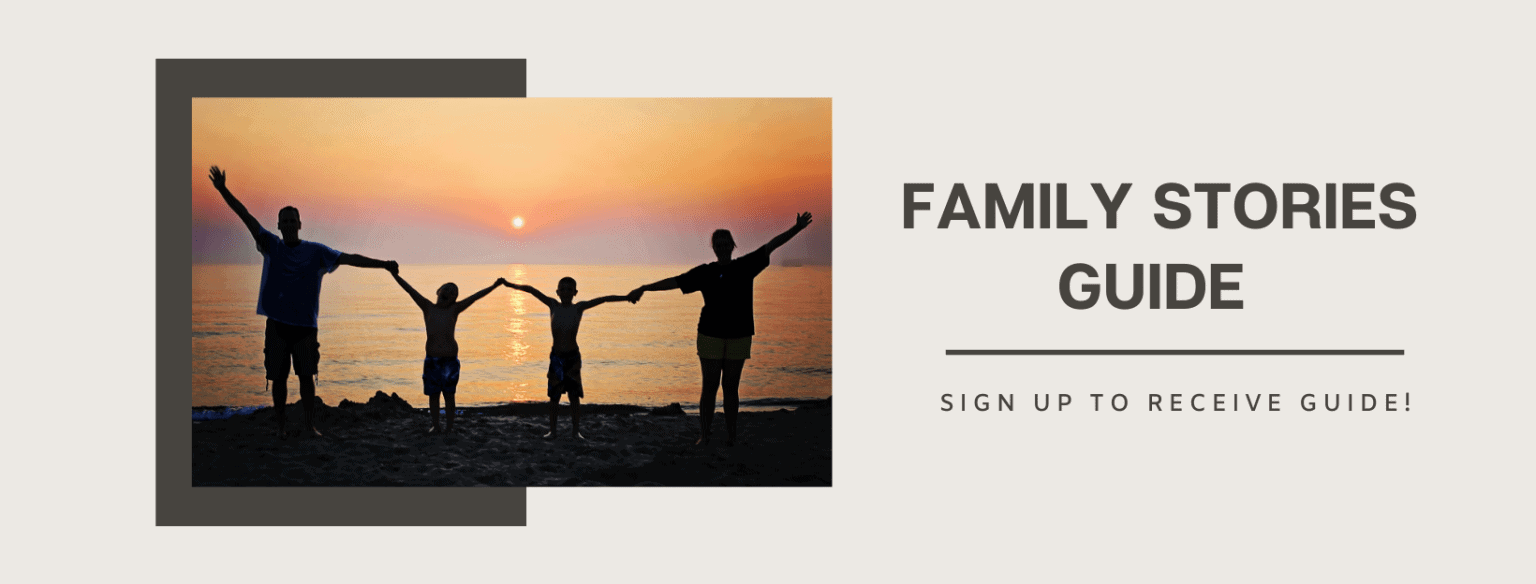
Sharing family stories passes on culture
Storytelling is universal in that every culture’s literature is established on oral storytelling traditions. Some, more than others, have maintained the oral tradition.
In the U.S., many immigrant and Black communities as well as Native Americans persist in transmitting culture, values, norms, and spirituality through storytelling.
In study after study, researchers have found that sharing family stories across generations strengthens family bonds.
A recent study on storytelling in Arabic immigrant families to North American found that parent/grandparents and adolescents agreed that the family stories help them to feel closer.
In her book, Saanii Dahatatt: The women are singing, Luci Tapahonso, a professor and inaugural poet laureate of the Navajo Nation, tells us that without stories, we lack the principles needed to live well.
“A person who is able to ‘talk beautifully’ is well thought of and considered wealthy,” she wrote. “To know stories, remember stories, and retell them well is to have been ‘raised right’; the family of such an individual is also held in high esteem.”
In research about experiences in African American communities, Janet Carter-Black, a professor at the University of Illinois at Urbana-Champaign, said that skilled storytelling was considered a gift in her family. “Any and everyone who had this gift, including parents, grandparents, aunts, uncles, and cousins, told stories to whomever would listen,” she wrote.
“Sometimes these oral treasures would touch one’s emotional core, producing floods of tears from anxious listeners. On other very special occasions, we were endowed with stories that made it difficult to clear one’s mind, stories that left seemingly indelible images of pain, sadness, and suffering.”
In immigrant communities, family stories tend to highlight hard work and perseverance as a way to prepare younger generations for the likely hardships they may face.
In ethnically diverse families, sharing family stories is a way to socialize children into a culture. They will use cultural sayings and proverbs in addition to family narratives.
When stories are more elaborate and detailed, researchers find that the effects on future generations are greater.
In one study, a team of researchers from the University of Illinois at Urbana-Champaign put it to the test and found that in comparison the immigrant youth were better equipped to pass on family stories in detail.

A walk is a great time for sharing family stories.
How to get started sharing family stories
Sharing family stories is so second nature to me that I had to reflect on the actual process. I understand that as our lives have become so busy, even those of us who continue the tradition of family stories have to sometimes fight for space to be heard.
Nowadays, for me, that space tends to be those times when generations gather around the dinner table. Make a rule to put down those smartphones at dinner!
Not all stories have to be long and elaborate. A favorite in my family is my mom’s story of how as a child she saved her baby chickens from a big, mean snake.
Another favorite is the WWII story of how Cousin Clarence had to survive on onions when he parachuted into a farming village in France. I’m fairly sure that story started as a way to get me to eat the onions in my food!
Blogger Brianna Martin, who writes about Christian parenting, encourages parents to start sharing family stories in small ways.
“Try not to fall into the trap of saying, I don’t really have any good stories to tell,” she wrote.
“Instead, find the story in the little things. If you’re really at a loss, tell the stories that your parents or grandparents told you. It’s fine if you’re just telling your kids about what your everyday life used to be like; kids can relate to everyday life!
“Telling stories that connect our lives to our kids’ lives is what it’s all about, so don’t worry about making it sensational or thrilling, it just needs to be about you (or other family members).”
For more tips on sharing family stories from the Disciple Mama Blog, read Brianna’s article Family Stories: Building Family Identity, Part 4.
Chrisy Frizzell of Duncan, Oklahoma, a member of the Facebook group Steeple People, recalls in vivid detail the setting of her father’s stories. She says that it was the ritual of his stories that made a difference, such as the scene she remembers below:
“My dad staring into whatever piece of leather he was hand tooling on the huge marble slab he had on an old surplus army desk, a thick stack of LPs on the record player playing in the background, the crackling in the background of whatever we were listening to: country blues, jazz, instrumentals.
“Daddy drawing realllll deep on his Raleigh cigarette before tapping his ash off and setting it in the ceramic ashtray my momma made him.
“He would just start talking, like in paragraphs. Then there would be long pauses, as he would hammer on his leather, smoke some more, have another glass of wine or cup of coffee, relive the memory in his mind some more, and then talk some more into the wee hours.
“I think I’m the night owl I am now in large part to how magical my Dad made some nights for me.”
A Missouri-based nonprofit organization has been working to multiply the magic of family storytelling with children in grades 4 through 8. The Grannie Annie Family Story Celebration’s mission is to inspire students to discover, write, and share their family history stories.
Children are asked to interview an older adult in the family and then write about what they learned from the story. The children submit their stories, which can be illustrated, to the organization for possible publication.
According to Annie Grannie, which was founded in 2005, its website features published family histories that have taken place on six continents over a span of about 400 years.

Sharing (your own) family stories
We hope you will begin sharing family stories and your suggestions in the comments below or on social media. Find us on Facebook and Instagram.
You can also click to join Steeple People, our own private group for those of us who just can’t get enough of those steeples and the stories around them!
In the meantime, enjoy these “How To” ideas from Lisa Wingate, a New York Times Bestselling Author and a member of her family’s “clan of tall tale tellers.”
Read about her tips on getting the memories flowing and raising the next generation of family storytellers.
Let’s prime the pump:
Ideas to get you started with sharing family stories
Go vintage
Find purpose
Involve community
Gather family
Drive there
Go vintage
Use an old photo or vintage item (e.g. rosary, pocket watch, even an old recipe) as a jumping off point for sharing family stories.
The items provide a focal point for the story and a perhaps a tactile aid for older family members in recalling stories.
Find purpose
When I sang childhood songs to my son, I would tell him about the family member who sang those songs to me.
For example, my grandpa Holly was always one to sing happy, silly songs — great for play time. I told my son stories about how grandpa just loved to fish and be outdoors. I would ask questions like “Why do you think he loved to fish?”
My end goal was that my son would eventually recognize in himself what I saw — that he liked to use nature or the outdoors to destress.
The outdoors became his “bounce back” accelerator. Birds singing, water rippling, and wind whooshing helped him regain balance, even after tough days of kindergarten! Almost two decades later, that’s still the case.
Involve community
Whether it’s your place of worship or the local library, locate a place for intergenerational connections. Find (or create) the opportunity for children to listen to older people tell their stories.
Too often older people assume that younger generations aren’t interested in their stories. So much is being lost. Don’t let that happen in your community.
Gather family
Hands down, story times around the family dinner table — particularly at holidays — are some of my favorite memories and best times for sharing family stories. When one of my aunts, uncles, cousins, or grandparents got going on a story, everyone pitched in to add their memory.
As children, we were encouraged to jump in on the fun. For young folks around the table, the opportunity to hear different versions is a chance to learn about perspective. True, we weren’t competing for attention with digital devices, but we always had something to do after dinner — such as the family football game.
Don’t let today’s version of distractions be an excuse. Sit, eat, and tell those stories!
Drive there
A favorite activity in childhood was driving around to see all the places where family members had once lived. Sometimes, a house was no longer standing, replaced by a lake in one instance.
But in all the places, my parents or grandparents sharing family stories about the lives that were lived there. For me, an Okie by birth, the dirt I stood on has always mattered. Feet on terra firma. In our family, passing on the legacy of memories comes with a field trip.

Teresa Trumbly Lamsam, Ph.D., is an accomplished Social Scientist and Journalist. Passionate about establishing credibility in the digital realm, she champions transparent and trustworthy online content. She is dedicated to producing content that sparks curiosity and nourishes the heart and mind.

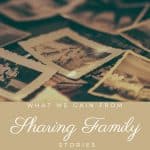




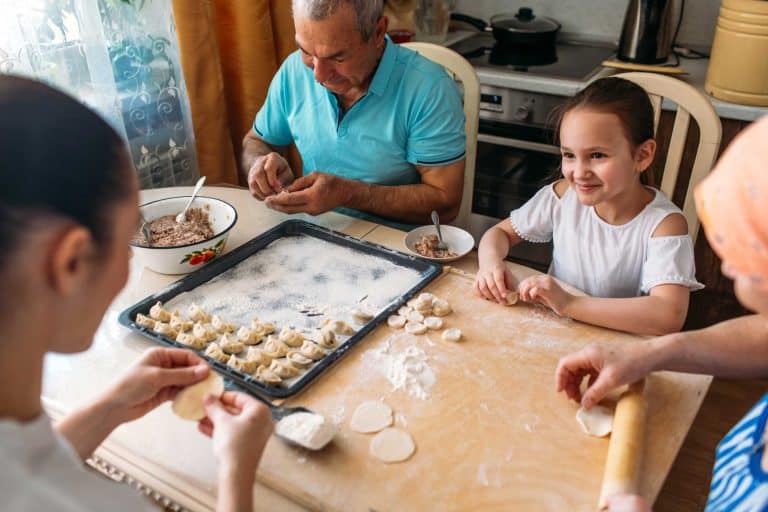
Now would be a good time for families to start to tell family stories. If not staying to gather do it over the internet or phone.
Thank you for this reminder! I come from a long line of amazing women motorcycles riders and grandfathers who were pilots in the war. It’s wonderful what I can glean from going through old photos with my children and the impact the “roots” of our generations past has had on our family!
Amazing article!?
Thank you for sharing!
Kimberly Purple
Thank you, Kimberly. I love hearing about your family stories!
Thank you for this fantastic article! I have long believed in the importance of family stories and I learned a lot from reading this! Blessings on your ministry.
Thank you so much!
This is a good way to see family stories I’ve always heard about my family stories they are shared them often.
That’s so great that you are helping keep these stories alive in your family! – Teresa
I love good family stories. My grandpa as a bunch of them and it’s always captivating to hear him tell them.
It’s good to know that there are others out there who appreciate family stories! – Teresa
Some of my best family memories are sitting with my older relatives and listening to stories about their lives. It’s so important to keep those going.
Family stories have always been a staple at our house. I told one this afternoon!
Marie, this is Teresa from Americana Steeples. I wish we could hear that story!
I would love to brainstorm with you on an article idea for Americana Steeples.
thank you so much for sharing. did you enjoy my ancestry series last month? i loved hearing the story of your mom and her braids defending the underdog. so cool!
I didn’t see that series. Could you please send me the link? I’d love to read it. Thank you!
Sharing family stories is also a good form of bonding because of the connection formed when discussing it. Great post!
This is a really great post, I love the moral 🙂
Sharing family stories is so awesome. One way my family likes to do it is with video. My parents recently sold their home where they lived for 50 years and moved to be close to us. My brother made a 38 minute video full of old videos, pictures, and memories. We watched it after Easter Dinner with the whole family. It was so amazing!
That’s such a cool idea! Wow!
What a sweet post. I definitely think it is important to pass down family stories so that lessons are never forgotten and to keep the spirit of our loved ones alive.
It is certainly a good idea to share family stories I wish that I had documented some stories that was shared with me sometime ago.
Lavern: I’m in the same boat – wishing I had written some of the stories down. I did, however, just purchase a microrecorder so that I could get my folks to record some of their stories!
Sharing family stories give us hope and moral lessons where we can learn. It also imbibes optimism. It helps us realize our potential!
That’s a really good perspective, Emman. Thank you for sharing!
Bullfrog sittin’ on a lily pad, lookin up at the sky,
Lily pad broke, frog fell in, got water in his eye…
Singing those old timey songs is such a gift for kids, helps with the generational links and the songs set the dads and grandpas and great grandpas in the wider historical time period.
Love all the storytelling prompts here.
My grandpa Holly sang this very thing! 😉
When I was a little kid I remember my grandmother and my father sharing our family stories with us. It is good to know how they started their lives that time and how they become strong and successful this time.